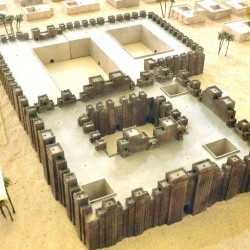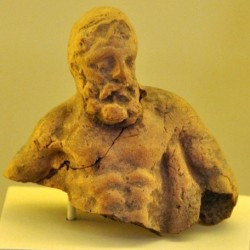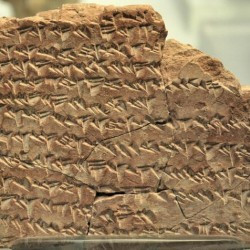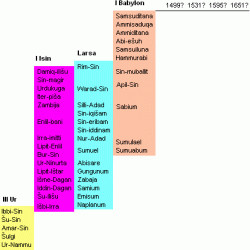Jona Lendering
Jona Lendering read history at Leiden University (MA 1993), specialized in Mediterranean culture at the Amsterdam Free University (MA 1996), and worked at excavations in Holland (Riethoven) and Greece (Halos). After teaching historical theory and ancient history at the Free University for several years, he was one of the founders of a school for history teaching, Livius Onderwijs. Born in Amsterdam, it has now spread to auxiliary locations in Bussum, Dronten, Gouda, Haarlem, Hoorn, Schagen, Zaanstad, and Zoetermeer. As of 2013, Livius Onderwijs has eight teachers, about 500-600 students a year, and offers tours to countries like Italy, Turkey, Iran, and Lebanon. The field trips help to etch into the students' minds some of what they've learned at the school.
Because history is for a large part telling a story, something you do best in your own language, Lendering prefers to publish in Dutch journals. However, he has contributed to the Bryn Mawr Classical Review and Ancient Warfare, while he is the founder of Ancient History Magazine. He is also the publisher and editor of the on-line publication of the Babylonian Chronicles of the Hellenistic Period, a set of important cuneiform sources for the history of the Seleucid and Parthian Near East, transcribed, translated and commented on by Bert van der Spek of the Free University Amsterdam and Irving Finkel of the British Museum. A publication as book is in preparation.
Lendering has written several books and maintains a blog in Dutch. He is the author of several books, including Edge of Empire and Consensus and Crises. For the Livius website, which has received several awards, he collaborates closely with Bill Thayer of LacusCurtius. Lendering is also the webmaster of two daily blogs, the MainzerBeobachter.com and Grondslagen.net.
There are 9380 items in Jona Lendering:
Babylon (Cairo)
Qasr al-Samra? Triangle-shaped; walls twelve meters tall, three wide, brick and natural stone; five hectares Southern gate: Iron Gate Legend: founded by refugees? age of Nebuchadnezzar Island Rawda, ship bridge c.100 Jewish Revolt Geniza Ben Ezra SynagogueBabylon, Esagila
Esagila or Esagil (Sumerian, "The house that rises its head"): temple of Marduk, center of the Babylonian state cult. Marduk and…

Babylon, Esagila, Model |

Babylon, Figurine of Heracles |
Babylon, Hanging Gardens
Hanging Gardens of Babylon: one of the Seven Wonders of the Ancient World. There is no evidence that it existed.Babylon was the cultural capital of the ancient Near East. Many monuments have become famous, like the Ištar Gate, now in…Babylon, Ishtar Gate
Walls of Babylon and Ištar Gate: two famous monuments in Babylon, belonging to the Seven Wonders of the Ancient World. Ištar…Babylon, obelisk
Obelisk of Babylon: in some lists, one of the Seven Wonders of the Ancient World. It did not exist.In the first century BCE, Diodorus of Sicily, probably quoting Ctesias of Cnidus, tells the following legend about queen Semiramis of Assyria: She…Babylonia
Babylonia is the Greek name of what the inhabitants knew as Mât Akkadî, the fertile alluvial plain between the Euphrates and Tigris. This was the heartland of the Babylonian Empire, which dominated the ancient Near East between the fall of…

A Babylonian almanac, mentioning future positions of the planets (British Museum) |
Babylonian Captivity
Babylonian Captivity

Comparative table of Babylonian Chronology |
Babylonian Empire
The Babylonian Empire was the most powerful state in the ancient world after the fall of the Assyrian empire (612 BCE). Its capital Babylon was beautifully adorned by king Nebuchadnezzar, who erected several famous buildings. Even after the Babylonian Empire…